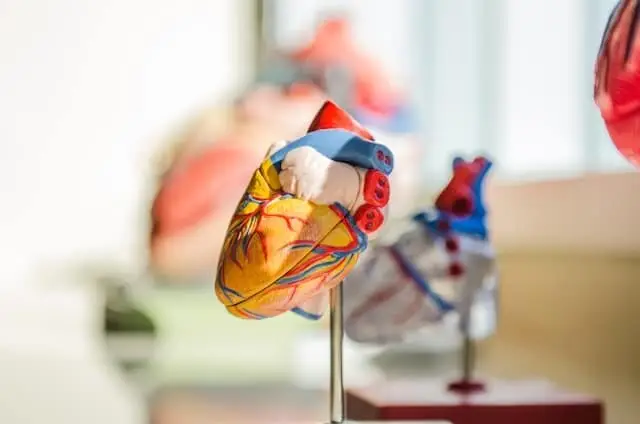How to fight high blood pressure naturally

What is High Blood Pressure?
Arterial hypertension is a prevalent chronic disease with no symptoms and is very dangerous. It is also one of the significant cardiovascular risk factors.
How to reduce high blood pressure?
Although there are medications to control blood pressure, it is possible to reduce it through lifestyle changes, including incorporating aerobic physical exercise, diet, and dietary supplements.
The most used dietary approach to control blood pressure is the DASH (Dietary Approach to Stop Hypertension) diet. This diet is high in potassium, calcium, magnesium, fiber, and lean protein. In addition, this diet is low in sodium, a mineral whose intake must be controlled to minimize fluid retention and the increase in pressure that occurs when blood passes through the blood vessels.
The basis of the DASH diet consists of the following:
- fresh vegetables and fruits (especially those high in potassium, which counteracts the effects of sodium).
- low-fat dairy products (ideally organic and always sugar-free)
- lean protein source foods
- whole grains
- beans/legumes
- healthy fats such as olive oil, nuts, avocado, and seeds.
However, certain foods will help you control your blood pressure the most:
Pomegranate juice: Pomegranate juice is rich in antioxidants, which help protect cells from oxidative damage caused by free radicals. Free radicals can cause inflammation and cell damage, contributing to heart disease and other blood pressure-related conditions.
The compounds in pomegranate juice can help dilate blood vessels, allowing blood to flow more easily through them. This can reduce blood pressure, as resistance to blood flow is one of the causes of high blood pressure.
On the other hand, chronic inflammation can contribute to high blood pressure and other cardiovascular diseases. The anti-inflammatory compounds in pomegranate juice can help reduce inflammation in the body.
Spinach: This vegetable is rich in nitrates, which are naturally occurring compounds found in many leafy green vegetables and have been linked to lowering blood pressure. Nitrates are converted to nitric oxide in the body, which helps dilate blood vessels and improve blood flow, which can help lower blood pressure.
Spinach is naturally low in sodium, making it a healthy choice for people trying to control their sodium intake.
In addition, spinach is rich in potassium, an essential mineral that helps balance sodium levels in the body. Potassium can help lower blood pressure by counteracting the adverse effects of sodium in the body.
Finally, spinach is rich in antioxidants, which help protect cells from oxidative damage. Antioxidants can help reduce inflammation in the body, which can contribute to high blood pressure.
Pistachios: These nuts stand out from their peers as they are an excellent source of potassium, fiber, and antioxidants. They are also low in sodium. According to a study conducted on people with dyslipidemia, pistachios have been shown to be effective in lowering systolic blood pressure. Pistachios are also an excellent source of magnesium, which is essential for regulating blood pressure.
Beet juice: It has been associated with numerous health benefits since ancient times. Beet is a vegetable rich in anthocyanins and potassium and low in sodium, and its juice has been studied as a possible hypotensive alternative. According to research, beet juice is rich in nitrates, precursors of nitric oxide, and are involved in improving endothelial function. In addition, beet juice has been shown to have antioxidant, antiinflammatory, and chemopreventive effects. It is important to note that these benefits are not observed in cooked beets.
Olive oil: this oil is an essential part of the DASH diet. It is a monounsaturated fat rich in oleic acid. It also contains antioxidants, especially vitamin E and polyphenols. The latter has been associated with a potent hypotensive effect, especially in women, improving endothelial function.
Dark chocolate: Dark chocolate with at least 70% cocoa significantly reduces blood pressure. It is important to note that it is a caloric food rich in fat, so the portion should be controlled. Dark chocolate is an excellent source of flavonoids associated with a modest reduction in blood pressure.
Flaxseeds: These seeds are an excellent source of omega-3 fats, antiinflammatory and antihypertensive. It is important to note that, to achieve the desired effects on blood pressure, consuming a daily serving of these seeds for at least 12 weeks is necessary. It should also be noted that, to achieve a better bioavailability of omega-3 fats, it is recommended to grind the seeds before consumption. Otherwise, the properties are lost.
Celery: Celery has been associated with lower blood pressure levels. In addition, it is a vegetable with diuretic effects, so it helps eliminate excess fluids and restore water and electrolyte balance. Celery is also low in sodium. In this case, consuming cooked celery is essential to take better advantage of its properties on blood pressure.
Tomato: This vegetable is an excellent source of lycopene, a carotenoid with potent antioxidant and antihypertensive functions. Studies have shown that tomato extract helps regulate blood pressure in people with diagnosed hypertension. Importantly, this vegetable is also low in calories and an excellent source of potassium, making it ideal for those suffering from metabolic syndrome or obesity.
Sesame oil: This oil is an ideal choice to incorporate into a meal plan to lower blood pressure. Research shows that long-term consumption of this oil helps increase and decrease sodium concentration.
Hibiscus tea: This somewhat bitter infusion benefits those suffering from high blood pressure for several reasons. On the one hand, it contains flavonoids, plant compounds with antioxidant properties. Flavonoids can help reduce inflammation in the body, which can contribute to high blood pressure.
Hibiscus tea has a diuretic effect, which can help eliminate excess fluids from the body. Fluid retention can contribute to high blood pressure, so the diuretic effect of hibiscus tea may be beneficial.
In addition, hibiscus tea contains ascorbic acid, or vitamin C, which can help improve blood vessel function and lower blood pressure.
Finally, hibiscus tea has a relaxing effect on blood vessels, which may help lower blood pressure.
Microgreens: Microgreens are tiny seedlings with a high concentration of compounds beneficial to cardiovascular health. For one, they are an excellent source of nitrates that are converted to nitric oxide in the body, which is a vasodilator par excellence.
Microgreens are also low in sodium, which can help control blood pressure. They are an excellent source of antioxidants that help protect cells from oxidative damage. Antioxidants can help reduce inflammation in the body and control increased blood pressure.
Microgreens are rich in potassium, an essential mineral that helps counteract the adverse effects of sodium in the body.
Food | Antihypertensive compound |
Pomegranate juice | Antioxidants, antiinflammatory compunds |
Spinach | Nitrates, potassium, antioxidants |
Pistachio nuts | Pottasium, fibre, antioxidants |
Beet juice | Anthocyanins, potassium, nitrates |
Olive oil | Oleic acid, vitamin E, polyphenols |
Dark chocolate | Flavonoids, magnesium |
Flaxseeds | Omega 3 fatty acids |
Celery | Diuretic compounds |
Tomato | Lycopene, potassium |
Sesame oil | Healthy fats |
Hibiscus tea | Flavonoids, vitamin C |
Microgreens | Fiber, potassium, magnesium, antioxidants, anti-inflammatory, nitrates |
In conclusion, nutrition is fundamental to reducing blood pressure levels as part of lifestyle changes. Even if you have already been diagnosed, it is possible to reverse high blood pressure levels by incorporating an approach based on the DASH diet and certain foods such as microgreens.
References
Chan, Q., Stamler, J., Brown, I. J., Daviglus, M. L., Van Horn, L., Dyer, A. R., Oude Griep, L. M., Miura, K., Ueshima, H., Zhao, L., Nicholson, J. K., Holmes, E., Elliott, P., & INTERMAP Research Group (2014). Relation of raw and cooked vegetable consumption to blood pressure: the INTERMAP Study. Journal of human hypertension, 28(6), 353–359. https://doi.org/10.1038/jhh.2013.115
Sankar, D., Rao, M. R., Sambandam, G., & Pugalendi, K. V. (2006). Effect of sesame oil on diuretics or Beta-blockers in the modulation of blood pressure, anthropometry, lipid profile, and redox status. The Yale journal of biology and medicine, 79(1), 19–26. Available at: https://www.ncbi.nlm.nih.gov/pmc/articles/PMC1942178/
Clifford, T., Howatson, G., West, D. J., & Stevenson, E. J. (2015). The potential benefits of red beetroot supplementation in health and disease. Nutrients, 7(4), 2801–2822. https://doi.org/10.3390/nu7042801
Asgary, S., Keshvari, M., Sahebkar, A., Hashemi, M., & Rafieian-Kopaei, M. (2013). Clinical investigation of the acute effects of pomegranate juice on blood pressure and endothelial function in hypertensive individuals. ARYA Atherosclerosis, 9(6), 326–331. https://pubmed.ncbi.nlm.nih.gov/24575134/
Asgary, S., Sahebkar, A., Afshani, M. R., Keshvari, M., Haghjooyjavanmard, S., & Rafieian-Kopaei, M. (2014). Clinical evaluation of blood pressure lowering, endothelial function improving, hypolipidemic and anti-inflammatory effects of pomegranate juice in hypertensive subjects: Beneficial effects of pomegranate juice in hypertensive subjects. Phytotherapy Research: PTR, 28(2), 193–199. https://doi.org/10.1002/ptr.4977
Coles, L. T., & Clifton, P. M. (2012). Effect of beetroot juice on lowering blood pressure in free-living, disease-free adults: a randomized, placebo-controlled trial. Nutrition Journal, 11(1), 106. https://doi.org/10.1186/1475-2891-11-106
Engelhard, Y. N., Gazer, B., & Paran, E. (2006). Natural antioxidants from tomato extract reduce blood pressure in patients with grade-1 hypertension: a double-blind, placebo-controlled pilot study. American Heart Journal, 151(1), 100. https://doi.org/10.1016/j.ahj.2005.05.008
McKay, D. L., Chen, C.-Y. O., Saltzman, E., & Blumberg, J. B. (2010). Hibiscus sabdariffa L. tea (tisane) lowers blood pressure in prehypertensive and mildly hypertensive adults. The Journal of Nutrition, 140(2), 298–303. https://doi.org/10.3945/jn.109.115097
Moreno-Luna, R., Muñoz-Hernandez, R., Miranda, M. L., Costa, A. F., Jimenez-Jimenez, L., Vallejo-Vaz, A. J., Muriana, F. J. G., Villar, J., & Stiefel, P. (2012). Olive oil polyphenols decrease blood pressure and improve endothelial function in young women with mild hypertension. American Journal of Hypertension, 25(12), 1299–1304. https://doi.org/10.1038/ajh.2012.128
Paran, E., Novack, V., Engelhard, Y. N., & Hazan-Halevy, I. (2009). The effects of natural antioxidants from tomato extract in treated but uncontrolled hypertensive patients. Cardiovascular Drugs and Therapy, 23(2), 145–151. https://doi.org/10.1007/s10557-008-6155-2
Rodriguez-Leyva, D., Weighell, W., Edel, A. L., LaVallee, R., Dibrov, E., Pinneker, R., Maddaford, T. G., Ramjiawan, B., Aliani, M., Guzman, R., & Pierce, G. N. (2013). Potent antihypertensive action of dietary flaxseed in hypertensive patients. Hypertension, 62(6), 1081–1089. https://doi.org/10.1161/HYPERTENSIONAHA.113.02094
Teng, J., Liao, P., & Wang, M. (2021). The role of emerging micro-scale vegetables in human diet and health benefits-an updated review based on microgreens. Food & Function, 12(5), 1914–1932. https://doi.org/10.1039/d0fo03299a
Rull, G., Mohd-Zain, Z. N., Shiel, J., Lundberg, M. H., Collier, D. J., Johnston, A., Warner, T. D., & Corder, R. (2015). Effects of high flavanol dark chocolate on cardiovascular function and platelet aggregation. Vascular Pharmacology, 71, 70–78. https://doi.org/10.1016/j.vph.2015.02.010
Sahebkar, A., Ferri, C., Giorgini, P., Bo, S., Nachtigal, P., & Grassi, D. (2017). Effects of pomegranate juice on blood pressure: A systematic review and meta-analysis of randomized controlled trials. Pharmacological Research: The Official Journal of the Italian Pharmacological Society, 115, 149–161. https://doi.org/10.1016/j.phrs.2016.11.018
Şentürk, T., & Günay, Ş. (2015). The mysterious light of dark chocolate. Turk Kardiyoloji Dernegi Arsivi: Turk Kardiyoloji Derneginin Yayin Organidir, 43(2), 199–207. https://doi.org/10.5543/tkda.2015.70360
Siervo, M., Lara, J., Ogbonmwan, I., & Mathers, J. C. (2013). Inorganic nitrate and beetroot juice supplementation reduces blood pressure in adults: a systematic review and meta-analysis. The Journal of Nutrition, 143(6), 818–826. https://doi.org/10.3945/jn.112.170233
West, S. G., Gebauer, S. K., Kay, C. D., Bagshaw, D. M., Savastano, D. M., Diefenbach, C., & Kris-Etherton, P. M. (2012). Diets containing pistachios reduce systolic blood pressure and peripheral vascular responses to stress in adults with dyslipidemia. Hypertension, 60(1), 58–63. https://doi.org/10.1161/HYPERTENSIONAHA.111.182147
Yang, Y., Marczak, E. D., Usui, H., Kawamura, Y., & Yoshikawa, M. (2004). Antihypertensive properties of spinach leaf protein digests. Journal of Agricultural and Food Chemistry, 52(8), 2223–2225. https://doi.org/10.1021/jf034551v
Disclaimer: The information provided in this article is for educational and informational purposes only and is not intended as medical advice. It is not a substitute for professional medical advice, diagnosis, or treatment. Always seek the advice of a qualified healthcare provider with any questions you may have regarding a medical condition. The author and publisher of this article are not responsible for any adverse effects or consequences resulting from the use of any suggestions, preparations, or procedures described in this article.

